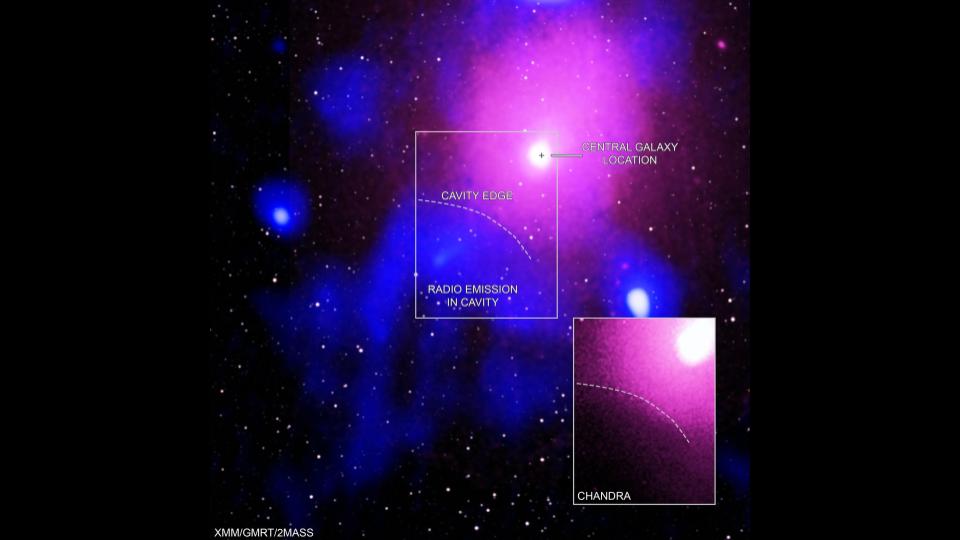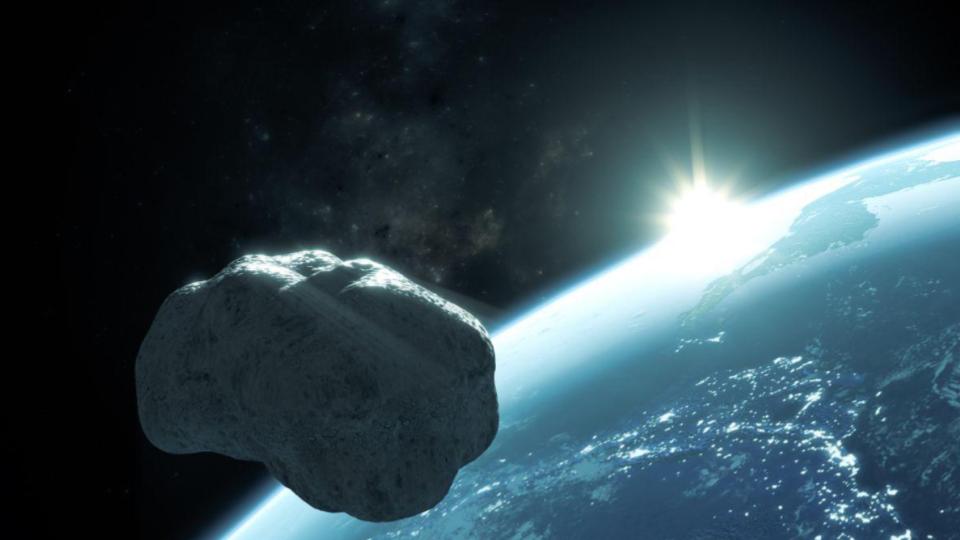Today we give a close look to the science behind that “Exploding Galaxy” filling all our feeds. Short version? Nothing exploded, but it’s still really cool. We also talk about a tiny rock (or rocket bit) that has been found dancing around the Earth.

- ASTRONOMERS DETECT BIGGEST EXPLOSION IN THE HISTORY OF THE UNIVERSE (ICRAR)
- Record-Breaking Explosion by Black Hole Spotted (Chandra)
Today’s top story flooded our feeds yesterday’s with news that astronomers had detected the biggest explosion ever seen in our universe, and this explosion is said to have lasted hundreds of millions of years. This statement left our resident astronomer, Dr Pamela, a bit confused, so she dug into the literature to put together today’s story.
In 2009, a paper by Perez-Torres et al described the hot and massive Ophiuchus galaxy cluster as the second brightest X-Ray source in the sky. Further work in 2016 by Wener et al found that X-Ray emission, associated with the extremely hot dense gas in the center of the cluster, has a weird hollowed-out dent in the side, as though someone had blown a bubble just outside the galaxy, and that bubble had pushed against the dense X-ray emitting gas.
Now, there are a lot of galaxy clusters with dented X-Ray emission that can be linked to Radio bright jets blowing bubbles outside of an active galaxy. The biggest of these are caused by AGN Outbursts. AGN, or active galactic nuclei, are the family of objects that quasars belong to, and they are the result of super massive black holes in the centers of galaxies feeding on material in hot dense accretion disc that is so hot and so dense it can be undergoing nuclear reactions, and generating a powerful magnetic field that flings electrons out the rotational poles of the system. Now, if that doesn’t sound wild enough, these systems can sometimes experience what is called an AGN outburst. During these events several solar masses of material can rapidly fall into the supermassive black hole, and as this happens, the associated accretion disc will also have strong jets that blast out of the core, and when they hit the intracluster medium, they will form shockwaves and blow bubbles filled with radio emission.
Well, when Wener and company looked at the Ophiuchus cluster and saw the dented X-Ray gas, scientifically referred to as a concave edge, they did calculations on how much energy would be needed to dent that much gas, and concluded the answer was along the lines of “More than is rational- this concave edge surely is something else.”
But not everyone was ready to give up on the idea of a massive powerful AGN outburst creating a massive dent in the X-Ray emitting gas. A new team did follow up observations to see if the radio emission that is characteristic of a bubble-blowing AGN was present. In a new paper in the Astrophysical Journal, written by a team led by Simona Giacintucci, they combine Chandra and XMM-Newton X-ray data with Murchison Widefield Array and Giant Metrewave Radio data, to definitively show that you should never say “That would require too much energy” when it comes to supermassive black holes, because they will rise to your challenge. This new data shows the perfect match of radio and X-Ray data to definitively say that there was indeed an AGN outburst, and it lasted for some 100s of millions of years.
Now here is where an attempt to make this story more click-worthy by using loaded language may lead to some confusion. In a lot of what we’re seeing written about this system, people are referring to this outburst as an explosion. Now, I don’t know if there is a scientific definition of an explosion that this matches, but I can tell you this isn’t what any normal person would call an explosion. In this system, a disc of material rapid-fire fed a supermassive black hole, and in the process, it spun up a magnificent magnetic field, and much destruction occurred. I wouldn’t exactly call this a controlled process, but it was something like feeding a fire hose with a flooded dam’s output channel – you knew where everything was flowing, but it was doing it in a way that damaged everything in the process.
This flood of material has stopped for reasons we may never know, and the sloshing around of material, and the jets, and everything else that flood triggered has also stopped. We only see the cooling carnage on one side of the once active galaxy. The other side is thought to have maybe been less dense an area, and the region the jet hit may have already cooled so much we can’t see it in the radio images. This is not an active galaxy. This is a formerly active galaxy that now sites in the center of the mess it made.
There are a lot of articles saying this is the most powerful explosion ever seen, and we also want to point out the 2 key words in this phrase – “ever seen”. The sky is big, and it takes a huge amount of effort to see things in this level of detail. This particular system is only 390 million light-years away, which in the vastness of the universe, is right next door. In the past – which we see as galaxies that are further away with light that takes longer to reach us – active galactic nuclei were much more common. While this is the most powerful AGN outburst seen so far, that doesn’t mean it’s unique. It just means it’s the biggest we’ve found so far, and as we keep looking, we should find more, and even bigger, bubbles getting blown by black hole accretion disks as supermassive black holes gobble up material on their way to hugeness.
Alright… that was a lot, and we are only going to look at one more story today, and it is a small story. A very small story in fact.

- Gemini Telescope Images “Minimoon” Orbiting Earth — in Color! (NationalAstro.org)
- Possible new ‘minimoon’ discovered orbiting Earth (Space.com)
Astronomers of all kinds are currently fascinated by a tiny object with a crazy orbit around our world. This tiny thing is of unknown composition, and is speculated to probably be a little asteroid but maybe be a big piece of space junk. Discovered by folks at the University of Arizona’s Steward Observatory as part of the Catalina Sky Survey, this object, cataloged as 2020 CD3, is only temporary, so if you have access to a fairly large telescope – like 30” or more – now is your time to get out or get online and start pointing at this crazily moving target. It is only about 6 – 12 feet or 2 – 3.5 meters in size, and is consistent with in appearance with a carbon-rich asteroid – but like we said, a few folks are speculating this is debris of some sort, so we’re not going to rule that out.
This object isn’t in a stable orbit, and while it mathematically looks like it’s probably been with us for 3 years, it may not be around in another 3 years, but will instead most likely depart our world and head off to explore new parts of the solar system through a fluke of orbital mechanics. This kind of an object, called a minimoon, isn’t thought to be rare – we probably have one of these random rocks orbiting our world at any given time. That said, seeing these things is hard, and happening to be looking in just the right place at just the right time and doing what is needed to see these hard-to-see objects … that’s the challenge. Our hats are off to the folks at Catalina for this cool discovery, and we look forward to learning the rock….or maybe rocket part’s … future.
<———————>
And that rounds out our show for today.Thank you all for listening. Today’s script was written by Pamela Gay. The Daily Space is produced by Susie Murph, and is a product of the Planetary Science Institute, a 501(c)3 non profit dedicated to exploring our Solar System and beyond. We are here thanks to the generous contributions of people like you. Want to become a supporter of the show? Check us out at Patreon.com/cosmoquestx


 We record most shows live, on Twitch. Follow us today to get alerts when we go live.
We record most shows live, on Twitch. Follow us today to get alerts when we go live.